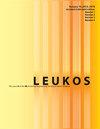Regional Differences in the Perception of Daylit Scenes across Europe Using Virtual Reality. Part I: Effects of Window Size
IF 2.6
2区 工程技术
Q2 CONSTRUCTION & BUILDING TECHNOLOGY
引用次数: 15
Abstract
ABSTRACT The size of window openings is widely acknowledged as an important factor in our spatial perception. However, little is known about how the perception and preference of windows changes between countries, leaving a gap of knowledge regarding the applicability of research findings across latitudes. This article presents the outcomes of a study investigating regional differences in the perception of spaces with varying window size (small, medium, and large), space size (small and large), spatial context (working and social), and sky type (overcast and two types of clear sky). As the regional differences were the main studied factor, the study was performed in Norway, Switzerland, and Greece, representing northern, central, and southern European latitudes, respectively, and used virtual reality as a means to replicate the same experiment in different locations. In total, 406 participants evaluated eight spatial attributes using an 11-point Likert-type scale. Results indicated that regional differences could be observed in the participants’ responses, with significant differences in how pleasant and calm the space was perceived, found not only between participants in Greece and Norway in all the studied window sizes, but also between Greece and Switzerland for the medium and large windows, indicating that even small variations in latitude within Europe can affect the spatial perception. The findings of this study reveal that spaces with specific fenestration characteristics might not induce the same response across different latitudes in Europe, and thus, have important implications for daylighting and architectural design, which would motivate the use of region-specific parameters.使用虚拟现实技术感知欧洲白天场景的地区差异。第一部分:窗口大小的影响
窗户开口的大小被广泛认为是影响我们空间感知的一个重要因素。然而,对于不同国家之间对窗口的感知和偏好如何变化知之甚少,这使得研究结果在不同纬度的适用性方面存在知识差距。本文介绍了一项研究的结果,该研究调查了不同窗户大小(小、中、大)、空间大小(小、大)、空间背景(工作和社交)和天空类型(阴天和两种晴空)对空间感知的区域差异。由于区域差异是研究的主要因素,因此研究分别在挪威、瑞士和希腊进行,分别代表欧洲北部、中部和南部的纬度,并使用虚拟现实作为在不同地点重复相同实验的手段。总共有406名参与者使用11分制的李克特量表评估了8个空间属性。结果表明,在参与者的反应中可以观察到区域差异,在空间的愉悦和平静程度上存在显著差异,不仅在希腊和挪威的参与者之间发现了所有研究的窗口大小,而且在希腊和瑞士之间发现了中窗和大窗,这表明即使欧洲内部纬度的微小变化也会影响空间感知。这项研究的结果表明,具有特定开窗特征的空间在欧洲不同纬度可能不会引起相同的反应,因此,这对采光和建筑设计具有重要意义,这将激励使用区域特定参数。
本文章由计算机程序翻译,如有差异,请以英文原文为准。
求助全文
约1分钟内获得全文
求助全文
来源期刊

Leukos
工程技术-光学
CiteScore
7.60
自引率
5.60%
发文量
19
审稿时长
>12 weeks
期刊介绍:
The Illuminating Engineering Society of North America and our publisher Taylor & Francis make every effort to ensure the accuracy of all the information (the "Content") contained in our publications. However, The Illuminating Engineering Society of North America and our publisher Taylor & Francis, our agents, and our licensors make no representations or warranties whatsoever as to the accuracy, completeness, or suitability for any purpose of the Content. Any opinions and views expressed in this publication are the opinions and views of the authors, and are not the views of or endorsed by The Illuminating Engineering Society of North America and our publisher Taylor & Francis. The accuracy of the Content should not be relied upon and should be independently verified with primary sources of information. The Illuminating Engineering Society of North America and our publisher Taylor & Francis shall not be liable for any losses, actions, claims, proceedings, demands, costs, expenses, damages, and other liabilities whatsoever or howsoever caused arising directly or indirectly in connection with, in relation to, or arising out of the use of the Content. Terms & Conditions of access and use can be found at http://www.tandfonline.com/page/terms-and-conditions .
 求助内容:
求助内容: 应助结果提醒方式:
应助结果提醒方式:


